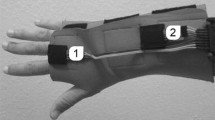Abstract
Although clinical benefits of deep brain stimulation (DBS) in subthalamic-nuclei (STN) neurons have been established, albeit, how its mechanisms improve the motor features of PD have not been fully established. DBS is effective in decreasing tremor and increasing motor-function of Parkinson’s disease (PD). However, objective methods for quantifying its efficacy are lacking. Therefore, we present a principal component analysis (PCA) method to extract-features from microelectrode-recording(MER) signals of STN-DBS and to predict improvement of unified Parkinson’s disease rating scale(UPDRS) following DBS (applied on 12 PD patients). Hypothesis of this study is that the developed-method is capable of quantifying the effects-of-DBS “on state” in PD-patients. We hypothesize that a data informed combination of features extracted from MER can predict the motor improvement of PD-patients undergoing-DBS-surgery. This shows the high-frequency-stimulation in diseased-brain did not damage subthalamic-nuclei (STN) neurons but protect. Further, it is safe to stimulate STN much earlier than it was accepted so far. At the experimental level, high-frequency-stimulation of the STN could protect neurons in the subsstantia-nigra (SN, an important element of the brain). Therefore, to test this hypothesis in humans, we need to perform STN stimulation at the very beginning of the disease so that we can predict the disease at an early-stage. The latent-variate-factorial is a statistical-mathematical technique PCA based tracking method for computing the effects of DBS in PD. Ten parameters capturing PD characteristic signal-features were extracted from MER-signals of STN. Using PCA, the original parameters were transformed into a smaller number of PCs. Finally, the effects-of-DBS were quantified by examining the PCs in a lower-dimensional-feature-space. This study showed that motor-symptoms of PD were effectively reduced with DBS.
Access this chapter
Tax calculation will be finalised at checkout
Purchases are for personal use only
Similar content being viewed by others
References
Kyriaki Kostoglou, Konstantinos P. Michmizos. Classification and prediction of clinical improvement in deep brain stimulation from intraoperative microelectrode recordings. IEEE Transactions on Biomedical Engineering. 2017; 64(5): 1123–1130.
Jan L. Bruse, Maria A. Zuluaga, Abbas. Khushnood. Detecting Clinically Meaningful Shape Clusters in Medical Image Data: Metrics Analysis for Hierarchical Clustering Applied to Healthy and Pathological Aortic Arches. IEEE Transactions on Biomedical Engineering. 2017; 64(10): 2373–2382.
Lorenzo Livi, Alireza Sadeghian, Hamid Sadeghian. Discrimination and Characterization of Parkinsonian Rest Tremors by Analyzing Long-Term Correlations and Multifractal Signatures. IEEE Transactions on Biomedical Engineering. 2016; 63(11), 2243–2249.
Fahn, S.; Elton, RL. The Unified Parkinson’s Disease Rating Scale. In: Fahn, S.; Marsden, CD.; Calne, DB.; Goldstein, M., editors. Recent developments in Parkinson’s disease. Florham Park, N.J: Macmillan Healthcare Information; 1987. p. 153–63.
Dustin A. Heldman, Christopher L. Pulliam, Enrique Urrea Mendoza. Computer guided deep brain stimulation programming for Parkinson’s disease, Neuromodulation. 2016; 19 (2): 127–132.
Viswas Dayal, Patricia Limousin, Thomas Foltynie. Subthalamic nucleus deep brain stimulation in Parkinson’s disease: the effect of varying stimulation parameters. Journal of Parkinson’s disease. 2017; 7: 235–245.
Jankovic J. Parkinson’s disease: clinical features and diagnosis. J Neurol Neurosurg Psychiatry. 2008; 79:368–376. [PubMed: 18344392].
Antoniades CA, Barker RA. The search for biomarkers in Parkinsons disease: a critical review. Expert Rev. 2008; 8(12):1841–1852.
Morgan JC, Mehta SH, Sethi KD. Biomarkers in Parkinson’s disease. Curr Neurol Neurosci Rep. 2010; 10:423–430. [PubMed: 20809400].
Author information
Authors and Affiliations
Corresponding author
Editor information
Editors and Affiliations
Rights and permissions
Copyright information
© 2019 Springer Nature Singapore Pte Ltd.
About this paper
Cite this paper
Rama Raju, V. (2019). Principal Component Latent Variate Factorial Analysis of MER Signals of STN-DBS in Parkinson’s Disease (Electrode Implantation). In: Lhotska, L., Sukupova, L., Lacković, I., Ibbott, G. (eds) World Congress on Medical Physics and Biomedical Engineering 2018. IFMBE Proceedings, vol 68/3. Springer, Singapore. https://doi.org/10.1007/978-981-10-9023-3_12
Download citation
DOI: https://doi.org/10.1007/978-981-10-9023-3_12
Published:
Publisher Name: Springer, Singapore
Print ISBN: 978-981-10-9022-6
Online ISBN: 978-981-10-9023-3
eBook Packages: EngineeringEngineering (R0)




